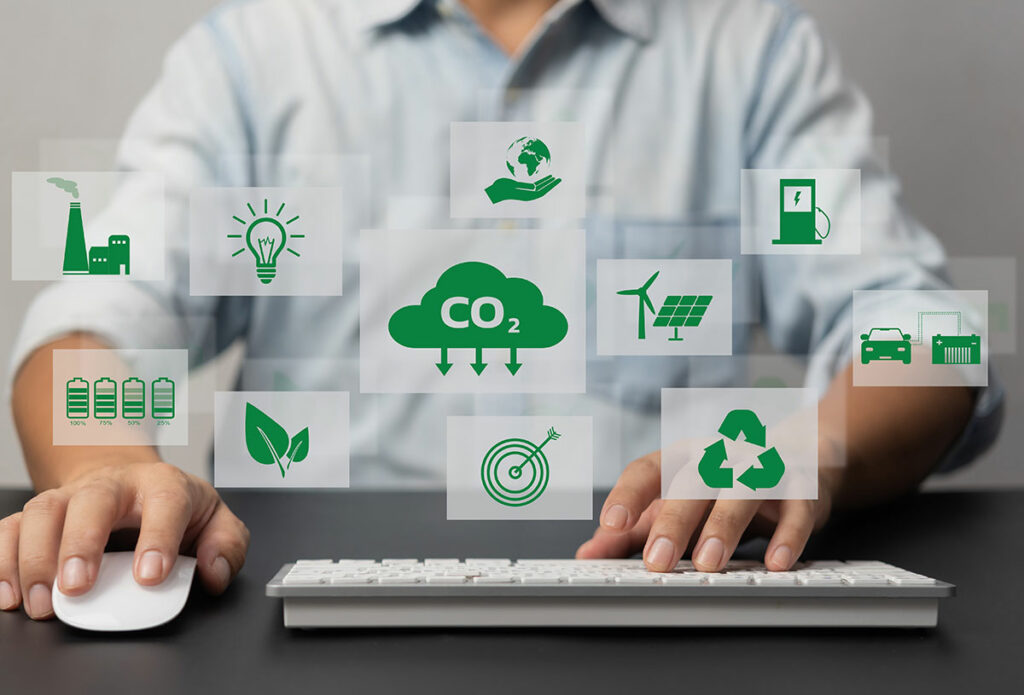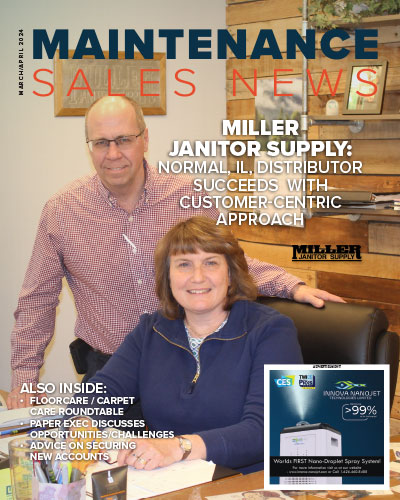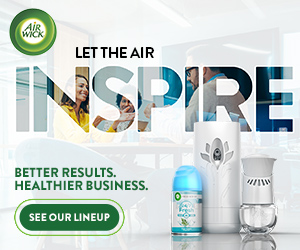How To Select Sustainable Cleaning Tools

Learning how to identify genuine, sustainable cleaning products can ensure sustainability expectations are being met without wasting time, inventory space and money. (Photo courtesy of ABCO Cleaning Products)
By Carlos Albir, Jr., Vice President of Operations at ABCO Cleaning Products
For businesses to prosper and succeed, decision-makers, including business leaders and facility managers, should be receptive to growth opportunities and solutions that not only meet customers’ needs but exceed them. Nowadays, customers’ perceptions on a business’ sustainability measures are drastically increasing and sustainability is top of mind for them when choosing businesses to engage with.
Implementing sustainable practices and products at a facility can be done in a variety of ways. For starters, facility managers can incorporate sustainable cleaning tools into their cleaning program. By incorporating sustainable cleaning tools, their facilities can prioritize both social responsibility in addition to the health and safety of facility occupants.
However, in today’s market, it can be challenging to distinguish just how sustainable some products truly are. Learning how to identify genuine, sustainable cleaning products can ensure they’re meeting sustainability expectations without wasting time, inventory space and money.
Research Third-Party Certifications
One of the most effective methods for identifying sustainable cleaning products is by researching which tools hold third-party certifications. Consider cleaning products that have been reviewed by independent organizations to ensure they meet specific sustainability standards. Organizations like UL Solutions and Green Seal offer a variety of sustainability certifications that provide an accredited stamp or seal of authenticity.
Utilizing third-party certified products not only shows facility occupants a business’ commitment to sustainable efforts, it can also offer assurance to facility occupants that facility managers care about them and the planet. This helps build trust between businesses and customers which can result in increased business. That’s because when customers trust a business or facility, they are more inclined to engage in further transactions and recommend the business to others.
Learn What’s Real (And What’s Not)
As the demand for sustainability rises, many organizations are jumping on the bandwagon. Unfortunately, 40% of organizations have reported misleading or false environmental claims on their products. This leads buyers, like facility managers, to fall victim to greenwashing even though those facility managers are trying to do the right thing of “going green.” To ensure transparency, facility managers should thoroughly consider the credibility of green cleaning tools they purchase. Doing due diligence by using companies that provide sustainability reports or those that work with third-party reporting organizations, like Green2Sustainable, can help increase transparency.
While switching to sustainable cleaning products, facility managers must take time to ensure the products they use at their facilities meet sustainability standards. This helps minimize the risk of advertising false sustainability claims to customers. Furthermore, reviewing cleaning products’ manufacturing processes, materials, packaging, and delivery methods helps give an idea of how sustainable those products are.
Materials, Ingredients And LCA… Oh My!
If a facility manager is ready to part ways with old, non-sustainable cleaning tools in turn for a better option, it’s important to consider the chemicals and materials that go into making specific tools. It’s also important to take research a step further and understand the Life Cycle Assessment (LCA) of a tool.
To help mitigate these concerns, third-party organizations conduct an Life Cycle Assessment (LCA) to evaluate the environmental impacts of a tool’s raw material acquisition, manufacturing and distribution. This comprehensive assessment helps ensure every stage in the product’s life cycle has minimal environmental impact, thus confirming it’s safe for humans to use.
When purchasing a cleaning tool, it’s important to be able to identify if it’s undergone a Life Cycle Assessment to confirm if it’s truly sustainable from raw material acquisition to disposal.
Go Green When You Clean
Facility managers can breathe easy knowing they’re doing their part to meet customers’ expectations while creating a cleaner and greener facility with sustainable cleaning solutions. Prioritizing sustainable cleaning shows consideration for social responsibility, helps reach sustainability goals and strengthens trust. Help protect the planet and work toward a brighter future by taking small steps toward sustainability today.
About the Author: Carlos Albir, Jr., is Vice President of Operations at ABCO Cleaning Products, a leader in sustainable cleaning tools. ABCO is a family-owned, Certified Minority Business Enterprise with Green Seal and UL Solutions-certified products, headquartered in Miami, Florida. For more information, visit www.abcoproducts.com.








